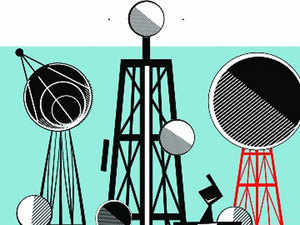
What does the celebrated abbreviation ‘PPP’ stand for? Some wordplay is in order as we discuss the devastating Supreme Court verdict under which India’s leading telecom companies, mainly Bharti Airtel and Vodafone Idea, have been told to pay more than Rs 1,02,000 crore in spectrum user charges, licence fees, interest and penalty — confirmed in a dismissal of review petitions on the adjusted gross revenue (AGR; bit.do/fqicC).
The World Bank expands PPP as public-private partnership, but a lot has happened in the past two decades to suggest that sometimes it is better expanded as private-public partnership. High-school mathematics teaches us that while sequence does not matter in combination, it does matter in permutation. A lot might follow from that for policymakers pondering on the next steps to keep India’s telecom revolution going.
Curative petitions may at most buy time, but only the naïve or the manipulative would argue that time does not represent money in an industry steeped in debt estimated, not too long ago, at Rs 3,90,000 crore for the big three players (bit.do/fqieo).
We need to ask if the manner in which government resources were deployed to help private telecom companies had a secret trap door into which the industry has fallen or whether they took the State for granted in a system in which growth is umbilically tied to licences and airwaves that are a matter of public policy.
That’s a sad plight for an industry that revolutionised the Indian landscape in a matter of two decades by arming the poor with cellphones and smartphones, not to speak of enabling an information technology revolution. The rise of mobile and digital technologies happily coincided with liberalisation that ushered in the private sector with a policy that got going in 1994. However, what we also need to focus on is that PPP, a term turned fashionable for infrastructure building after reforms began in 1991, was applied to mobile telephony but de facto turned out to be so.
While the PPP tag has been officially applied for digital infrastructure in rural areas, particularly those that take fibre optics to far-flung villages, in effect, spectrum has done pretty much the same thing to take the number of connections past 1.1 billion in a 1.3-billion strong country in which standing in a months-long queue for a shoddy landline connection was par for the course only three decades ago.
Looking back at the 1990s, in highway development, the government spent money to acquire land before handing over the building or management to private players. In electricity generation, gas or coal came from the government. Along came sweeteners in the form of tax holidays and easier bank loans. All these collectively blessed the PPP tag.
But in mobile telephony, the 2G spectrum scandal emerged from a policy that aimed at making services cheaper. The companies that brought in the revolution evidently did not see the risk in getting spectrum through a dubious policy that had political risk written all over it.
Now that there is a huge mess to clear, it is perhaps wise to redefine the mobile telecom revolution retrospectively as part of a PPP regime even as we quibble which of two Ps, private or public, comes first. The Supreme Court has said what it has in a sense of fair play, but government, which wears several hats of taxman, policymaker, consumer’s friend and business facilitator, needs to step in so that the industry and consumers do not suffer unduly. Redefining mobile telephony as a PPP may be the only way out, with some implications for the ground rules in a new context.
There are only three big players left in the field, so Bharti Airtel and Vodafone Idea need to be able to compete with each other and with the more recent entrant, Reliance Jio. The Telecom Regulatory Authority of India (Trai) is designed more to help consumers than to play a groundsman who smoothens the turf. It is for the government to think smartly so that predatory pricing or deep pockets that indirectly hurt competition do not get in the way of a level playing field.
It is time for a fiscally-strapped government to ask: what is in it for me? The mobile revolution is behind us. The healthy proliferation of 2G connections was a matter of basic social need. The emerging universe of 5G spectrum is more like a luxury.
The government would do well to think of itself as a partner than a provider for telecom players. In other words, the private-public partnership needs to become a public-private partnership. The State needs to get a slice of the emerging upside in the next wave of the telecom revolution. Once we accept that principle, solutions can emerge from the messy Supreme Court verdict.
Download The Economic Times News App to get Daily Market Updates & Live Business News.
Read More News on
Download The Economic Times News App to get Daily Market Updates & Live Business News.









 Get Unlimited Access to The Economic Times
Get Unlimited Access to The Economic Times
